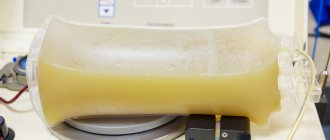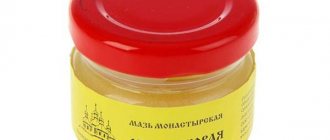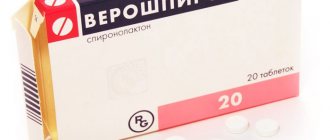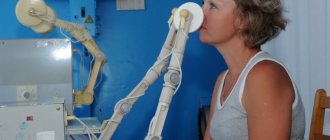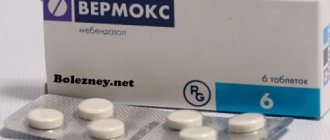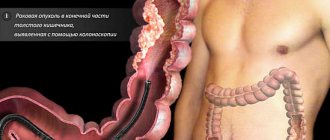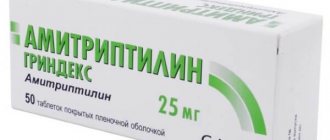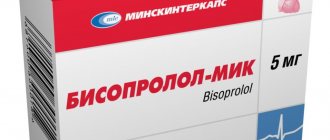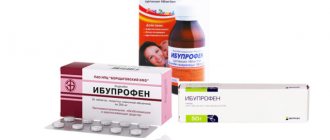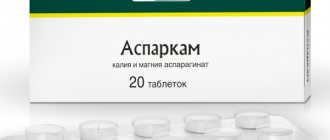Medical (medicinal) electrophoresis
Electrophoresis is a method of physiotherapy, the main techniques and techniques of which were developed in the Soviet Union in the second half of the last century. It was then that theoreticians and medical practitioners discovered the positive effects of weak electric current on the body in combination with medications. Correctly selected active substance and compliance with the doctor’s recommendations make this procedure painless and safe.
The essence of the procedure is that under the influence of electricity, a medicine dissolved in water moves through the skin to the desired organ. The procedure takes from 5 to 20 minutes and, with the correct current strength, does not cause unpleasant or painful sensations. When prescribing medications, the doctor takes into account contraindications and individual reactions of the body so that an allergic reaction or unwanted side effects do not develop after treatment.
Once in the shallow layers of the skin through the ducts of the sebaceous and sweat glands, the active substance accumulates in the cells and intercellular space, forming a so-called depot. From which it is then distributed throughout the body through the blood or lymph flow, providing an effect on deeper tissues and organs. Electrophoresis treatment, which is not associated with skin damage, is widely used in various branches of medicine, including pediatrics.
Carrying out at home
Electrophoresis is a modern method of treatment; the necessary medicine is introduced into the human body through current. The device uses those substances that will be dislocated into ions in solution.
The most commonly used solvent is:
- dimethyl sulfoxide - used for poorly soluble substances in water;
- distilled water;
- saline.
As for the penetration of the skin for drugs, it will decrease from the head to the feet, namely:
- facial skin has maximum permeability;
- the skin of the lower legs and feet is also highly permeable.
It is worth noting that with galvanic administration of drugs, the mucous membranes are more permeable than the skin. During electrophoresis, substances penetrate approximately one centimeter.
Interesting! The older the person, the less skin turgor, and accordingly the amount of the administered substance decreases.
Due to low permeability, most of the injected drugs begin to linger in the skin, resulting in a microdropper effect. Norepinephrine and adrenaline are eliminated from the human body within one week.
Advantages of electrophoresis
For parents, especially during the first year of the baby’s life, the most significant advantage of such a procedure will be painlessness and absence of skin damage, which distinguishes, for example, vaccinations. But besides this, there are also less obvious, at first glance, positive aspects.
The drug is administered in a very small amount and directly into the organ in need of treatment. Thus, the risk of many side effects caused by the effects of drugs on the digestive system of children, as well as high concentrations of the active substance in the blood, is reduced.
Related articles: Necessary electrophoresis accessories
Delivery of the necessary components necessary for treatment directly to the diseased organ or tissue. Moreover, in the form of ions - charged particles, which increases the activity of the substance and provides a quick therapeutic effect.
The medicinal substance delivered to the skin depot using electrophoresis remains there for quite a long time, up to a month. This prolonged effect will allow not only to reduce the doses of medications administered to the child, but also to conduct courses of treatment less frequently.
You can carry out electrophoresis at home by purchasing a special portable device. Of course, only as prescribed by a doctor, fulfilling all the necessary requirements for the installation of electrodes, the concentration and purity of the solution, the duration of the procedure and safety precautions.
What you need to know about Trental?
The drug thins the blood, changes its chemical composition and dilates blood vessels. After taking it, the blood supply to the extremities increases and the energy metabolism of the cerebral cortex accelerates.
In children, the drug is prescribed for hip dysplasia and SVD (vegetative dystonia syndrome). It is also prescribed for cerebral palsy. The medicine is administered through a special method of precisely delivering the substance to the organ called “electrophoresis”.
Mothers often ask: what to do if a child accidentally ate Trental? In this case, you should immediately rinse your stomach and call an ambulance. Side effects observed in the child in this case: insomnia, headache, loss of appetite, allergic reaction.
Other features of the drug:
- Increases the elasticity of the walls of blood vessels, slightly expanding them. This has virtually no effect on the heart rate;
- Positively affects the tissues of the central nervous system, kidneys and limbs;
- Helps improve the quality of metabolic processes in the central nervous system;
- As a result of taking the medicine, the child's motor activity may increase. After taking the tablet, the effect of the medicine appears quite quickly.
In medicine, Trental for children under one year of age is used in conjunction with a method such as electrophoresis. This ensures high speed of delivery of the active substance and a long-lasting effect. The dosage is determined individually based on the results of examinations. Tablets are used extremely rarely. For this there must be serious evidence.
Contraindications for electrophoresis
General contraindications to the use of electrotherapy for any age include:
- individual allergic reactions;
- any acute inflammation;
- increased body temperature;
- eczema, dermatitis, skin sensitivity disorders;
- renal and heart failure, bronchial asthma;
- tendency to develop bleeding, blood clotting disorders;
- any damage to the skin in the area of the procedure.
In pediatrics, for children over one year of age, the use of electrophoresis is subject to general rules and restrictions. But for infants, especially in the first 3 months of life, there are additional contraindications:
- pustular skin infections;
- excessive nervousness during or after the procedure;
- treatment-induced sleep disturbance.
In the last two cases, it is better, after consulting a doctor, to interrupt the course of procedures.
Electrophoresis devices – how to buy?
Today there are a sufficient number of different electrophoresis devices that can be used at home. Thus, Potok, AGN-32, AGP-3, GNIM-1, Model-717, Tonus devices are sources of galvanic and diadynamic currents, and Amplipuls-3T, Amplipuls-4 devices generate sinusoidal modulated currents.
The following devices are perfect for home use: Elfor, MAG-30, Potok, Solnyshko, Elan, MIT (EF1, EF2), Elesculap. The WGD-10 electrophoresis device works with gels. It is best to purchase equipment for the electrophoresis procedure in specialized Medtekhnika stores. The Medtekhnika chain of stores works directly with manufacturers of medical equipment, so the risk of buying a low-quality device is minimal.
Combination of electrophoresis with other procedures
As a rule, electrotherapy is prescribed to children in combination with other medical procedures. Most often, the use of electrophoresis is combined with massage. Which can be done after physiotherapy. This combination of procedures will help, firstly, to ensure the distribution of the drug throughout the tissues more quickly and evenly. And, secondly, it will calm and relax the child.
But do not forget that electrophoresis is the introduction of medications into the body. Which may not fit well with others prescribed at the same time. Therefore, it is a good idea to find out from your doctor whether taking certain medications prescribed for your child before or after physical therapy will cause any unpleasant consequences. In pediatrics, procedures with aminophylline, trental, dibazole, magnesia, calcium and other substances are prescribed, depending on the diagnosis.
Related articles: Home electrophoresis - is it possible?
At 3 months, as a rule, the first vaccinations begin. If the planned vaccination coincides with the course of electrophoresis, then it should not be interrupted. You can reschedule the vaccination or perform it on a day when there is a break in electrotherapy. Or you can postpone the start of the electrophoresis course, since within 2-3 days after vaccination you can observe a deterioration in your health.
Electrophoresis prescribed to a child is not a reason to change your usual lifestyle, unless, of course, such a procedure is associated with the treatment of a serious illness. You can take your baby for walks and attend classes at development centers. You just need to take into account that it takes some time for the child to recover after the procedure, especially if he is sweating. The interval between treatment and going outside is from half an hour to 3 hours, it depends on individual characteristics.
Electrophoresis. Two stories: a two-year-old with speech delay and an infant with hypertonicity.
Children are, of course, a great blessing. But this is also a huge responsibility and constant worry for your child. When it comes to the health of my loved ones, and especially children, I am an alarmist. If I see, in my opinion, any deviations in the development of a child, I try to get an appointment with an appropriate specialist and get professional advice. Often my worries turn out to be complete nonsense, but not always. And if suddenly you are faced with neurological problems, then most likely you will be prescribed physical therapy.
One of the most common physiotherapeutic procedures is electrophoresis. I’ll write about it today.
Electrophoresis is a treatment method based on the administration of drugs through the skin and mucous membranes using direct electric current.
The process of the procedure: electrodes with cotton swabs impregnated with a drug are applied to the required area of the body (cervical region, arms, legs, chest - depending on need). A weak electric current is supplied through them, due to which the medicine enters the body through the pores of the skin. The duration of the procedure is 10 minutes.
This is the machine in our clinic.
A course of electrophoresis was prescribed to both of my children with a 1% aminophylline solution.
Eufillin is a drug that has a bronchodilator effect, improves blood circulation, has an analgesic effect, and improves blood supply to organs.
HISTORY 1. Delayed speech development
My eldest son started speaking quite late. At 2 years old, there were only a few “human” words in his vocabulary. After consultation with a neurologist, we were prescribed a comprehensive treatment: a course of electrophoresis and Cortexin injections.
During childbirth, my son received a cervical injury, which means this could have caused delayed speech development, since the brain could not have received the required amount of oxygen and nutrition. For this reason, electrophoresis was prescribed specifically to the cervical spine to relieve tension in this area. .
During the electrophoresis procedure, the son sometimes experienced slight discomfort and said that he was “hot.” In fact, of course, he didn’t feel hot, the only thing the baby could experience was a slight tingling sensation from microcurrent shocks, but he expressed his feelings the way he knew how) Despite these rare complaints, he lay calmly for the required 10 minutes, watching cartoons .
Results: Positive dynamics became noticeable almost after the first procedures. Of course, I cannot say 100% what exactly affected it, since the treatment was carried out in parallel. I think that both electrophoresis and cortexin contributed. Perhaps if one thing had been done, the result would have been clear to me. The fact remains: after treatment, the child’s vocabulary began to be actively replenished with new words. Now, six months after treatment, no one can tell from the child that such a problem occurred.
STORY 2. Hypertonicity
Unfortunately, with our youngest child we again had to resort to the electrophoresis procedure. During the examination, the neurologist revealed increased hypertonicity of the extremities - both arms and legs.
The purpose was identical: electrophoresis with aminophylline on the cervical spine.
When the procedures began, the baby was 4.5 months old. With a child of this age, of course, it is more difficult. Lying in place for 10 minutes is quite problematic for a little person who has just begun to explore the world, but has already learned to roll over onto his stomach. Bright toys and rattles came to the rescue.
Sometimes this didn’t help either – I had to carefully pick up my son, holding the electrodes.
When is electrophoresis treatment prescribed?
Doctors prescribe electrophoresis for a child, including at the age of 1-3 months of life, in the following cases:
- myotonic syndromes: hypertonicity or, conversely, hypotonicity of muscles;
- disorders of the musculoskeletal system: torticollis (congenital or caused by hypertonicity) or hip dysplasia;
- various neurological disorders;
- to reduce pain of various origins;
- with diathesis.
In the future, the list of indications for physiotherapy will include all those diseases for which this procedure is prescribed for adults. Unless, of course, contraindications to its implementation are identified.
Trental for SVD
SVD is a dysfunction of the autonomic nervous system. This disrupts blood circulation in the extremities, the functioning of the gastrointestinal tract and the heart.
Autonomic dystonia syndrome is one of the most common childhood diseases - if left untreated, a person can develop asthma, hypertension, and coronary heart disease in adulthood
Trental for SVD is prescribed to improve microcirculation of cerebral vessels. The form and dosage of use must be agreed with your doctor. Giving your child medicine on your own is dangerous.
Electrophoresis for hypertonicity or hypotonicity
Hypertonicity is excessive tension of individual muscle groups. It can appear in a child from birth, and not after 2-3 months, as some parents believe. The reasons may vary, from illnesses suffered by the mother during pregnancy to consequences after a difficult birth. This is a rather dangerous condition that can subsequently lead to developmental delays, so treatment should begin as early as possible and strictly follow all doctor’s prescriptions.
To relieve tension from the muscles, normalize their blood supply and improve nerve conduction, electrophoresis with aminophylline is prescribed. Sometimes in combination with calcium. Other procedures in this case include paraffin baths and, of course, massage. Saturation of tissues with aminophylline improves blood circulation not only in muscles, but also in cartilage, and relieves spasms that impede normal blood flow.
Related articles: Physiotherapy - how medications penetrate the skin
For hypotension, electrotherapy with aminophylline is combined with taking vitamins and other medications to strengthen the body. Massage is also used, but its purpose is somewhat different, not to relax, but to activate muscle contraction.
Types and methods of using electrophoresis
general description
With electrophoresis, drugs penetrate the body under the influence of an electric current.
This technology allows you to quickly and painlessly deliver the drug to exactly the right place without damaging the tissue. When treated with electrophoresis, the substance needed by the patient has a prolonged effect and is excreted from the body very slowly. Contraindications to the use of this method are chronic skin diseases, thrombophlebitis, viral diseases and blood diseases. Electrophoresis with lidase is successfully used in surgery and cosmetology. Lidase is an enzyme preparation that significantly reduces the strength of connective tissues by removing hyaluronic acid from them. If there are scars, burns or other traces of injury on the body, under the influence of this substance the scars will become less noticeable, and the swelling of the surrounding tissues will subside. Lidaza is also effective for getting rid of joint pathologies and combating adhesions - areas where normally unconnected tissues have grown together for some reason. The full course of treatment with this method usually lasts from 10 to 20 sessions. Electrophoresis with aminophylline helps saturate cartilage tissue; it is prescribed for intervertebral hernia and osteochondrosis. Eufillin dilates the bronchi, accelerates blood circulation, and relieves pain. A full course consists of at least 10 procedures, which are carried out every other day and last half an hour. During the session, the patient may experience a slight tingling sensation.
Application in gynecology
Electrophoresis in gynecology is prescribed for adhesions and chronic processes, menstrual irregularities and pelvic inflammatory diseases. The procedure uses drugs such as zinc, lidase, and potassium iodide. The drug is introduced into the body in minimal doses, does not disturb the microflora of the stomach and, breaking down into ions, is effectively distributed to all organs. Electrophoresis during pregnancy is done when there is increased tone of the uterus and the risk of premature birth. This method is recognized as the most gentle and safe for introducing moderate doses of drugs into the body of the expectant mother. The electrodes are placed on the cervical-collar area.
Application in dentistry
Electrophoresis in dentistry is recommended for cysts, granulomas, pulpitis, periodontitis, pain after treatment or tooth extraction. A special pad is moistened in a medicinal substance and applied to the affected area or inserted into the tooth. Under the influence of current, the pain goes away, the dental canals are restored, and bacteria disappear from them. Immediately after the procedure, the canals must be sealed. The full course of treatment is 10–20 procedures, each lasting less than half an hour. This method is often used in complex cases when the drug needs to be retained in the tissues for as long as possible. In the case of a tooth, the effect of the drug may last for several weeks. The risk of developing allergies during this procedure is practically eliminated, but there are a number of contraindications. The session cannot be performed for patients with pacemakers, acute diseases of the cardiovascular system, cancer or bronchial asthma.
Application of endonasal electrophoresis
Endonasal electrophoresis is used primarily for the treatment of diseases of the organs of vision and brain. The device's turundas are moistened in a medicinal solution and inserted into the patient's nostrils. The session lasts a maximum of 15 minutes, and the current is not supplied continuously: 5 minutes of exposure are followed by 2 minutes of rest. In patients suffering from cerebral palsy, this procedure reduces muscle tone and reduces hyperkinetic crises by placing electrodes on the eyeball.
Electrophoresis in other types of diseases
Electrophoresis with magnesium is popular to combat bronchitis.
A 20% magnesium solution helps achieve a resolving, analgesic, laxative and antispasmodic effect, relieves stress and normalizes blood circulation. In pregnant women, magnesium reduces the uterine sensitivity to oxytocin, which significantly reduces the risk of spontaneous contractions and the onset of premature labor. Electrophoresis with proserin is prescribed to patients who have suffered a stroke or viral neuroinfections, suffering from facial neuritis or multiple sclerosis. Prozerin has the ability to improve the conduction of electronic impulses in synapses. In addition to neurology, this method has found application in pediatrics, where it is used to treat children with cerebral palsy. The full course consists of 7–10 procedures, which can be repeated after 2 months.
Electrophoresis for children
Electrophoresis for children is one of the few procedures that can be started at a very early age. With its help, eye and nervous system diseases, heart pathologies, bronchitis, sinusitis, hepatitis, cystitis, stomatitis and other ailments are treated. Providing an analgesic, anti-inflammatory and relaxing effect, the current helps normalize metabolism and improves the production of biologically active substances in the body. Many medications cannot yet be given to babies in order to avoid complications on the gastrointestinal tract - and therefore it is extremely important to deliver drugs directly to the site of the disease.
Physiotherapy for hip dysplasia and torticollis
These diseases are congenital and appear early, but with correct diagnosis and timely treatment they can be successfully cured in children even in infancy. Physiotherapy, in particular electrophoresis, plays an important role here.
Solutions with aminophylline are also used for exposure here, since disorders are associated, as a rule, with cartilage tissue, which is most affected by this drug.
Physiotherapy in combination with massage, physical therapy and special devices, used in accordance with the doctor’s prescription for a long time, gives excellent results, normalizing the condition and development of the child. Calcium supplements are also prescribed, often in combination with trental.
Trental for children in tablets
As the instructions say, the tablets are contraindicated for children under 18 years of age. The drug has narrow application points and a specific effect. In addition, the abundance of side effects makes you think about using this medicine. Neurologists rarely prescribe pills.
Trental is used to treat such childhood pathologies as hip dysplasia, cerebral palsy, and SVD. Treatment is carried out using a special method of physiotherapy called “electrophoresis”.
This is how the drug is delivered to various organs and tissues. To administer the medicine, its solution is used. The dosage is prescribed individually. The instructions must be read before use.
Trental (tablets) is rarely used in childhood. This is due to the lack of knowledge of the drug and strong side effects. It is prohibited to give pills to a child without the doctor’s knowledge. If your baby accidentally swallows the medicine, you need to rinse his stomach and consult a doctor. By following these recommendations, parents can avoid many mistakes.
Electrophoresis of the cervical spine in infants
Electrophoresis is often used on the cervical spine for infants. Some parents may be intimidated by such a procedure for such a young child, but there is no need to be afraid. The baby will not experience any discomfort, since the voltage applied is so small that only a slight tingling sensation will be noticeable. Only cool wet wipes with medicines and the need to lie still for a while can cause discomfort for the child. Indications for electrophoresis in infants may include the following disorders:
- Hypertonicity and hypotonicity of the child's muscles.
- To treat the consequences of birth trauma;
- Inflammatory diseases of various organs.
- Neurological diseases.
- Disorders of the musculoskeletal system.
As you can see, the list is quite extensive and the appointment is made by the attending physician, often based on the individual characteristics of each small patient. Electrophoresis in children is so often prescribed due to the simplicity of this manipulation and the absence of negative effects on the growing organism. Compared to tablets or injections, the procedure produces minimal side effects. However, like any physiotherapeutic procedure, electrophoresis performed on infants has its contraindications, which must be taken into account during the procedure.

